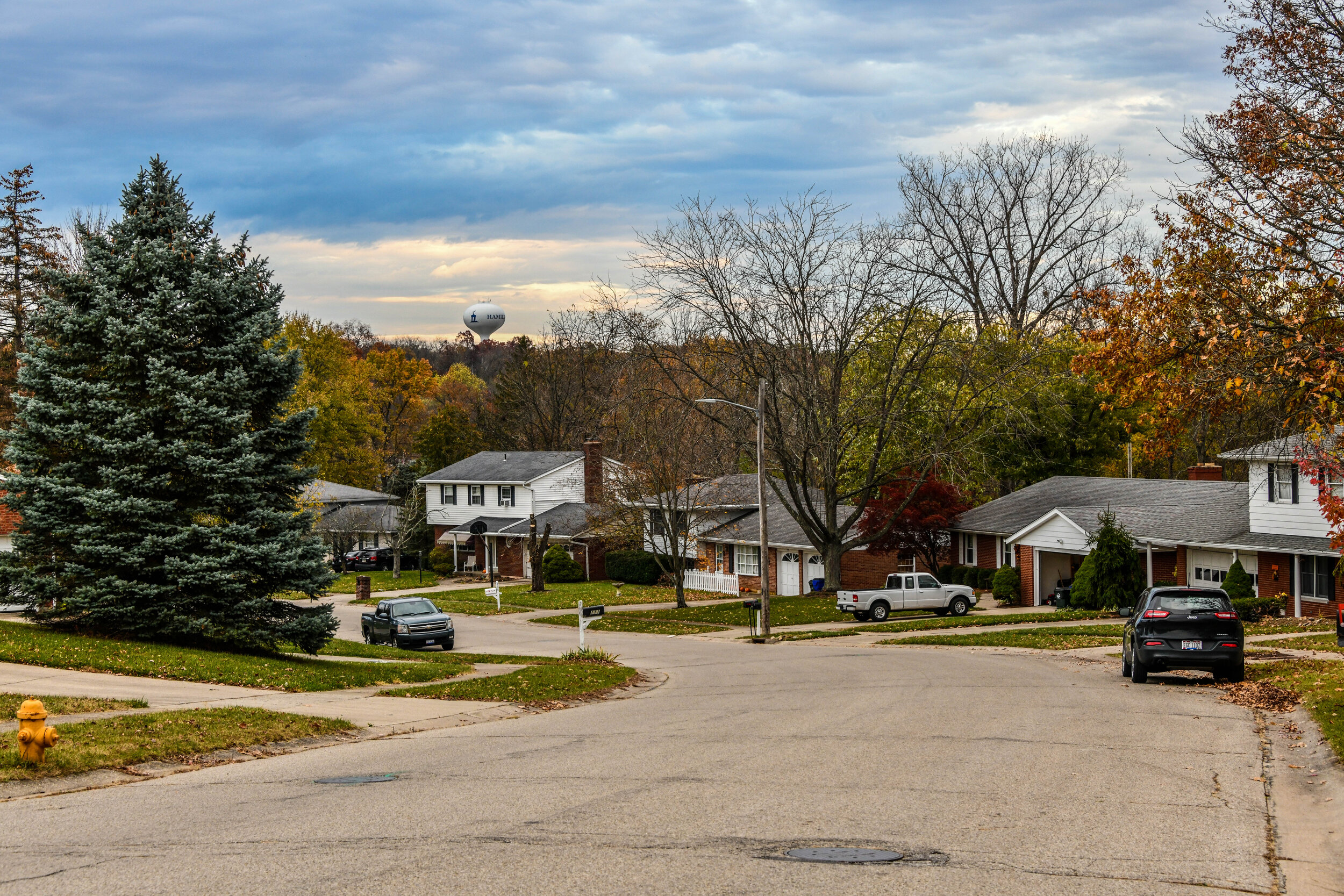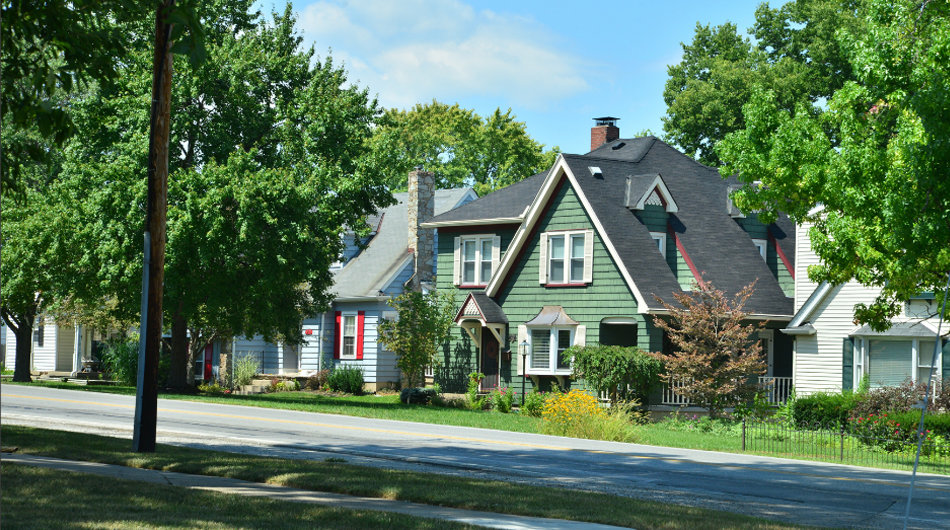
Learn more about each of Hamilton’s 17 neighborhoods and what makes them special.
Three Kinds of Neighborhoods
Hamilton’s 17 neighborhoods can be described in three general categories: urban, traditional, and suburban.
The suburban neighborhoods consist of largely separated single-use zones. For instance, residential subdivisions may be without public spaces, institutions, and commercial spaces within the area. In these neighborhoods you may find large tracts of land devoted to industrial parks, business parks, and “big box” retail stores.
Traditional neighborhoods are defined as walkable, densely built pedestrian-scaled city units with the following three components weaved within the fabric of the neighborhood: public spaces (parks, squares, playgrounds), institutions (schools, churches, government buildings), or commercial spaces (retail, office, industrial).
The urban neighborhoods contain all of the characteristics of Traditional neighborhoods, but are different in that they define Hamilton’s City Center. The City Center consists of a higher concentration of the aforementioned characteristics, and is what some may describe broadly as Downtown Hamilton.
Explore off the beaten path in Hamilton neighborhoods. Below is a presentation given at the August 20‘21 17STRONG board meeting.
Suburban Neighborhoods
Millikin
Millikin is named for the fact that its subdivisions, like Brookwood, Twin Brook, West Park, and others surround Millikin Woods Park. It developed largely after World War II and was notable for being where many G.I.s returning from the War built their first homes.
Enterprise Park
Enterprise Park is largely made up of newer business/industrial park uses, but has a number of apartment complexes along Bypass 4, and an adjacent subdivision. It is also the home of the Butler County Regional Airport.
Taft Pl/Gov. Hill
Taft Pl/Gov. Hill is home to Hamilton High School, Fitton Family YMCA, and Twin Run Golf Course. Notable subdivisions are: Taft Place, Governor’s Hill, Gunn Eden Park, Carmen Place, Fairways at Twin Run, Gardner Ridge, and Deerfield Village.
Washington
Washington is home to the Hamilton Freshman School and world-champion West Side Little League. It’s composed of the following subdivisions among others: Random Hills, Random Oaks, Sanders, Berkeley Square, Hamilton West Estates, and Gordon Smith.
New London
Named for its primary thoroughfare, New London is composed of the following subdivisions among others: Oak Park, Forest Hills, Fairway Hills, Britton Ridge, Heathwood, and Southern Hills. It is home to Badin HS, Potter’s Park Golf Course, and Miami Woods
Traditional Neighborhoods
Armondale
Armondale is a neighborhood including both the Armondale and Edgewood subdivisions. Edgewood was the name of the stop on the historic Junction Railroad between Hamilton and Indianapolis. The neighborhood is home to one of Hamilton’s two post offices.
East End
East End, also called East Hamilton or Gobbler’s Knob, was created with the building of the Mosler Safe Co. in 1891 and annexed in 1908. It was home to the two largest safe companies in the city that was once known as the “Safe Capital of the World.”
Highland Park
Highland Park was annexed in 1919. The neighborhood is composed of the subdivisions Lawn View, Lawn Park, and namesake Highland Park. Its quiet, tree-lined streets and residential architecture are beloved by residents for their storybook feel.
Jefferson
Jefferson, also called 4th Ward, was at one time a highly industrial neighborhood, and enclave for Italian immigrants to the city. It is now home to many small bustling family-owned businesses and is the city’s most ethnically diverse neighborhood.
Lindenwald
Lindenwald is the City’s most populous neighborhood. It is unique for its bounty of park space, resident pride, and diverse, quality residential architecture. Of note are the many east-west streets named for 19th Century Ohio Governors.
North End
North End, like the East End, is known for its celebrated industrial past and residents of German and Appalachian heritage. It was home to the Fordson Tractor Plant, a subsidiary of Ford Motor Co., and the boyhood home of baseball great, Joe Nuxhall.
Prospect Hill
Peter Thomson, founder of Champion Paper, built the Prospect Hill and Grandview subdivisions behind his world-renowned mill. It is a tree-lined neighborhood noted for a number of unique craftsman homes, Fort Hamilton Hospital, and Wilson Middle School.
Urban Neighborhoods
Dayton Lane
Dayton Lane is composed largely of the historic district by the same name. The turn-of-the-century neighborhood features the residences of the industrial elite from the late-1800s through the early-1900s. Notable is the unique Campbell Avenue Park.
Downtown/CBD
Downtown is the historic and geographic center of the city. It’s a growing, vibrant city center full of new businesses and residents. Fort Hamilton was built in 1791 on the east banks of the Great Miami River on the present site of Monument Park.
German Village
German Village includes landmarks such as the historic Lane Public Library, YWCA, and the new Marcum Park. It was home to Hamilton’s first courts, school, newspaper, and businesses. German Village, along with Downtown, is the oldest part of the city.
Rossville
Rossville was a separate city from 1804-1854, when it was annexed into the City of Hamilton. It is named in honor of Sen. James Ross of Pennsylvania, and is home to the historic district of the same name, including the iconic Main St. Business District.
Riverview
Riverview, sometimes referred to as 2nd Ward, is home to such icons as the BTW Community Center, Bailey Square, Foundation Field, and Symmes Park. A neighborhood with many active churches and a proud history.


















